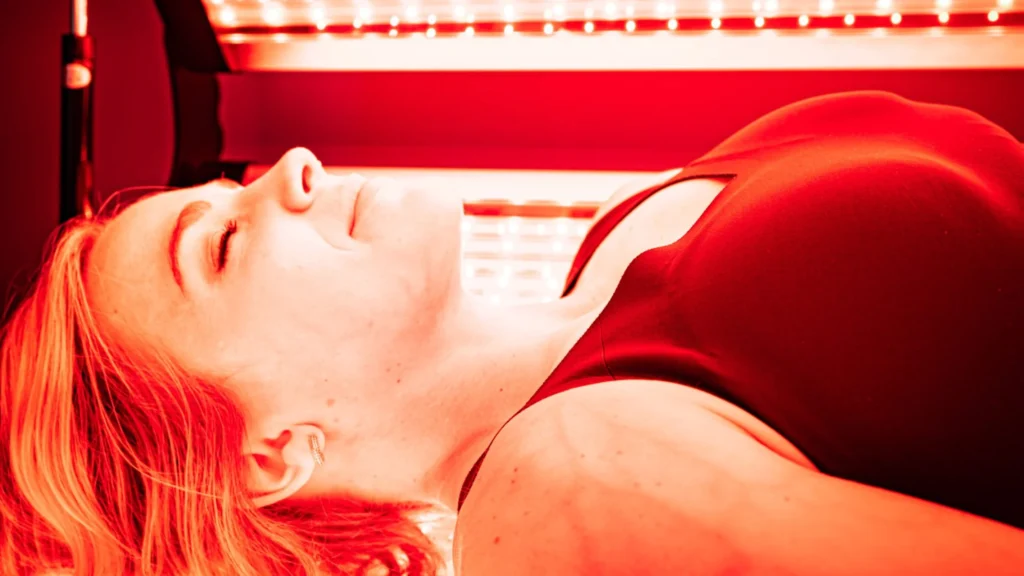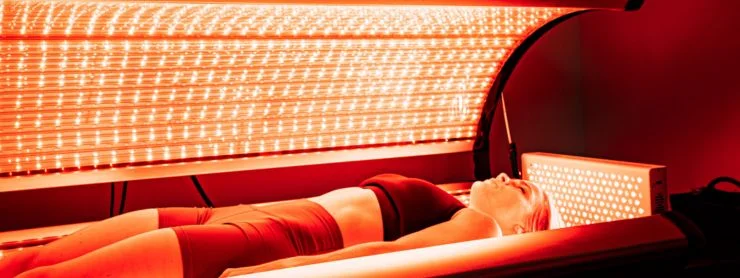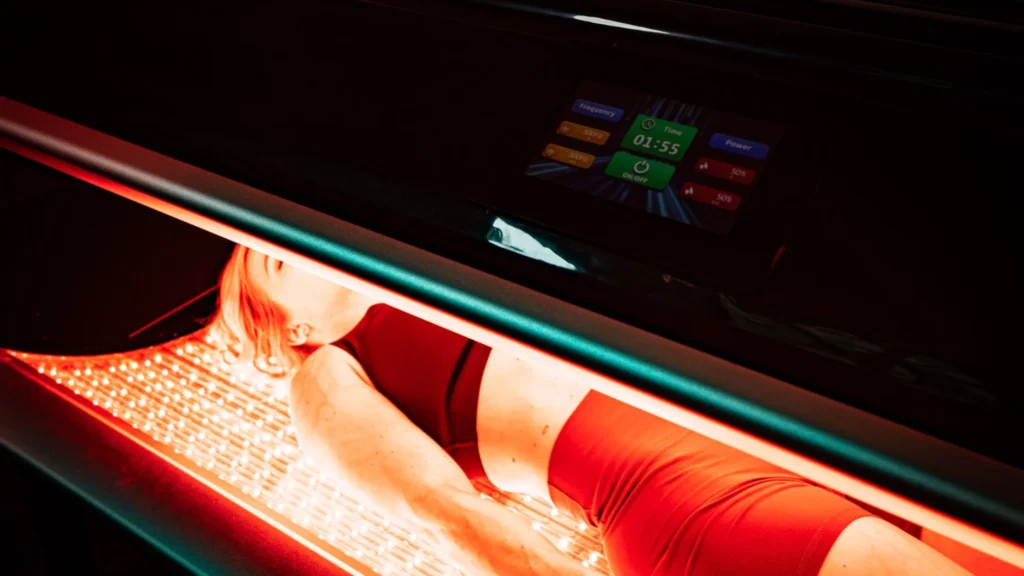Red light therapy and infrared therapy are two increasingly popular modalities in the world of wellness. Both methods are used to promote healing, reduce inflammation, and enhance overall well-being by harnessing specific wavelengths of light. However, many wonder how these two therapies differ, what their unique benefits are, and how to choose the right option for their personal health goals. This article examines the basics of red light and infrared therapy, compares their key differences, evaluates expert opinions, and provides insights on equipment, long-term impact, and application. To fuel health & wellness practices, the guide also invites readers to contact us for further information. Supported by scientific research and case studies, this comprehensive guide will help readers make informed decisions about the most appropriate therapy for their wellness needs.
In red light therapy, low-level wavelengths (typically between 620 and 750 nanometers) are applied to the skin. These wavelengths are believed to promote collagen production, reduce wrinkles, and facilitate wound healing. Infrared therapy, on the other hand, involves wavelengths that are longer than visible red light (commonly ranging from 750 nanometers up to about 1 millimeter). The far infrared used in such therapy penetrates deeper into the tissue, resulting in increased muscle relaxation, better circulation, and enhanced detoxification through sweating. Though both therapies leverage light energy to improve cellular processes, these differences in wavelength and penetration depth lead to distinct treatment outcomes.
Below, the article is structured into several key sections that answer important queries about the basics, differences, expert insights, personal considerations, equipment research, and long-term impact of each therapy type.
How Do Red Light Therapy and Infrared Therapy Work at a Cellular Level?

Red light therapy works primarily by stimulating the mitochondria in skin cells, which boosts adenosine triphosphate (ATP) production. ATP is the energy currency that cells use to perform various functions, including repair and regeneration. Research has shown that exposure to red light can lead to improvements in skin texture and a reduction in oxidative stress. For example, clinical trials have reported up to a 30% increase in collagen production when red light therapy is applied consistently over several weeks (Barolet & Boucher, 2010).
Infrared therapy, especially in its far infrared form, penetrates deeper into the body and affects muscle tissue, joints, and even internal organs. This deeper penetration improves circulation, reduces muscle stiffness, and promotes the detoxification process by increasing sweat production. One study found that infrared therapy can improve blood flow by up to 20%, which is critical for enhanced tissue repair and reduced inflammation (Shin et al., 2016). The difference in penetration depth between red light and infrared is largely due to their wavelengths. While red light is ideal for surface-level skin rejuvenation, infrared energy is more effective in promoting deep-tissue healing and relaxation.
What Are the Key Differences Between Red Light and Infrared Therapy?
The two therapies differ significantly in terms of wavelength, penetration depth, and primary benefits:
Wavelength and Penetration:
Red light typically ranges from 620 nm to 750 nm and is absorbed mainly by the epidermis and superficial dermis, making it ideal for skin-related treatments such as reducing fine lines, improving complexion, and stimulating collagen. Infrared therapy, particularly far infrared, has wavelengths starting from 750 nm and can extend much longer, penetrating deep into muscle and connective tissue. This makes it effective for alleviating muscle soreness, joint stiffness, and chronic pain.
Primary Benefits:
Red light therapy is often used to enhance skin health, reduce signs of aging, and improve wound healing. Its anti-inflammatory properties and its ability to induce cellular regeneration also make it useful in treatments for conditions like acne and psoriasis. Infrared therapy is better known for promoting relaxation, reducing joint and muscle pain, and enhancing detoxification processes by inducing sweat. It is widely used in infrared saunas, where the deep heat can support cardiovascular health by boosting circulation and facilitating metabolic efficiency.
Mechanism in Action:
In red light therapy, the target is mainly the mitochondria within skin cells, driving energy production and influencing gene expression that leads to tissue repair. Infrared therapy, due to its ability to heat tissues deeply, yields effects similar to a mild, sustained exercise session. It increases core body temperature which can help the lymphatic system and improve immune response (Hamblin, 2017).
In summary, while both therapies share overlapping benefits such as reducing oxidative stress and promoting healing, red light therapy is best suited for improving skin quality and superficial regeneration, whereas infrared therapy is more appropriate for deep tissue repair, pain management, and metabolic enhancement. To dive deeper into how red light therapy works and where to start locally, check out What Is Red Light Therapy? A Beginner’s Guide for Grand Rapids Residents.
How Do Expert Opinions Compare Red Light Therapy to Infrared Therapy?

Experts in the field of photobiomodulation and light therapy acknowledge that both treatments offer significant, albeit distinct, benefits. Researchers often cite the importance of choosing the type of therapy based on the target condition. For instance, dermatologists frequently recommend red light therapy for conditions like wrinkles, scars, and hyperpigmentation. In contrast, physical therapists and sports medicine experts lean toward infrared therapy for managing muscle soreness, joint pain, and promoting recovery after intense physical activity.
A review published in the Journal of Clinical Laser Medicine & Surgery highlighted that the clinical applications of red light therapy include skin rejuvenation and wound healing, whereas infrared therapy is noted for its benefits in reducing chronic pain and supporting systemic circulation improvements (Barolet & Boucher, 2010). Additionally, expert panels often recommend using a combination of both therapies as part of a comprehensive wellness regimen. Combined treatments might yield synergistic effects—with red light improving surface conditions and infrared addressing deeper tissue impairments.
Clinicians also emphasize that individual patient conditions, lifestyle, and therapy goals must guide the choice between these light therapies. For example, patients suffering from seasonal affective disorder (SAD) might benefit from red light therapy’s mood-enhancing properties due to its interaction with circadian hormones and serotonin production, whereas athletes in rehabilitation for soft tissue injuries are more likely to benefit from the anti-inflammatory and deep-heating capabilities of infrared therapy.
What Personal Health Goals Should Guide Therapy Selection?
When deciding between red light therapy and infrared therapy, personal health goals play a crucial role. Individuals must evaluate their primary needs—whether it is to improve skin appearance, reduce joint pain, or enhance muscular recovery.
For Skin Health and Anti-Aging: If your primary focus is to improve skin tone, reduce wrinkles, or accelerate healing of surface wounds, red light therapy is most appropriate. Studies have suggested that regular exposure can significantly improve collagen synthesis and cellular repair, leading to a more youthful complexion.
For Deep Tissue Recovery and Pain Relief: If one seeks relief from chronic joint pain, stiffness, or muscle soreness, infrared therapy is the recommended option. Infrared saunas have been shown to reduce pain symptoms in conditions like arthritis. The stimulation of circulation and the promotion of toxin elimination through sweat are beneficial for overall muscle recovery.
For Stress, Sleep, and Mental Health: Both therapies can improve relaxation and sleep quality, though their mechanisms differ. Red light supports circadian rhythm balance, which may help in regulating sleep patterns and mood. Infrared therapy’s deep-heating effects can relax muscles and reduce overall stress hormones, indirectly supporting better sleep and recovery.
For Metabolic and Circulatory Benefits: Individuals looking to support their cardiovascular health may also choose infrared therapy because of its capability to enhance blood flow and reduce systemic inflammation. Increased circulation plays a key role in the body’s healing processes, helping to deliver nutrients and oxygen more efficiently.
Ultimately, it is advisable for individuals to consult healthcare providers to undergo appropriate diagnostic evaluations before starting any light therapy regimen. Personal factors, such as age, existing health conditions, and even skin type, can influence the therapy’s effectiveness.
What Equipment is Commonly Used in Red Light and Infrared Therapy?

A wide variety of devices are available for both red light and infrared therapy, ranging from portable panels and LED masks to full-scale infrared saunas. Knowing the available technology can help consumers choose equipment that aligns with their treatment goals and budget.
Red Light Therapy Devices:
These devices are engineered to emit specific wavelengths in the red portion of the visible spectrum. Common forms include LED panels for home use, targeted LED hand-held devices, and fiber-optic systems. For example, LED panels designed for skin treatments are calibrated to emit light between 630 nm and 700 nm. Such devices are used in clinical settings as well as at home for improving skin texture and reducing inflammation. Modern innovation also includes red light therapy masks that combine convenience with precision targeting of facial skin.
Infrared Therapy Equipment:
Infrared devices range widely in form factor. Infrared saunas are the most popular, offering full-body exposure to far infrared wavelengths. In addition, portable infrared heating pads and panels are available for localized treatment. These devices often feature adjustable temperature settings and emit wavelengths between 750 nm and 1200 nm or beyond. The deep penetration of far infrared light allows for enhanced muscular and joint recovery. High-quality devices also include timers and digital controls that ensure safe and consistent treatment sessions.
Quality and Safety Considerations:
When choosing between devices, users should consider factors such as wavelength specificity, energy output (measured in mW/cm²), and treatment area size. Regulatory certifications, such as those from the FDA or CE mark, ensure that devices meet safety standards, especially for home or clinical use. It’s important to note that while many devices claim to offer broad-spectrum benefits, selecting equipment that has been tested and validated in peer-reviewed clinical studies is advisable. To better understand the proven advantages of using clinically tested devices, explore the top benefits of red light therapy backed by science.
Below is a summary table comparing key attributes of red light and infrared therapy devices:
| Feature | Red Light Therapy | Infrared Therapy |
|---|---|---|
| Wavelength Range | 620–750 nm (visible light) | 750 nm to over 1,000 nm (invisible) |
| Penetration Depth | Superficial (skin level) | Deep tissue (muscle and joints) |
| Common Applications | Skin rejuvenation, anti-aging | Pain relief, muscle recovery, detox |
| Device Types | LED panels, masks, laser tools | Saunas, heating pads, LED panels |
| Energy Output | Typically lower intensity | Higher intensity for deep heating |
| Suitable For | Cosmetic and surface therapy | Deep tissue and systemic therapy |
This table clearly outlines the fundamental differences in device specifications and practical uses. Consumers can refer to the table to determine which device best matches their specific health and wellness needs.
What Are the Long-Term Impacts of Red Light and Infrared Therapy?
Long-term use of either red light therapy or infrared therapy can contribute to sustained improvements in various aspects of health, but the benefits differ based on the treatment modality.
Long-Term Effects of Red Light Therapy:
With consistent application, red light therapy has been shown to not only improve skin appearance but also stimulate cellular regeneration. Over months of regular use, improvements include more even skin pigmentation, reduced wrinkle depth, and faster healing of minor cuts or abrasions. Some studies suggest that red light therapy may also protect the skin from oxidative stress by decreasing inflammation markers. These benefits contribute to a more youthful complexion and improved barrier function.
Long-Term Effects of Infrared Therapy:
Infrared therapy’s long-term impact is particularly notable in the realms of pain management and recovery. Routine sessions can significantly reduce chronic pain conditions, enhance muscle recovery after exercise, and improve joint mobility over time. The enhanced circulation and increased metabolic rate from infrared exposure facilitate regular detoxification processes, allowing the body to maintain a better immune system response and reduced inflammatory status. Users have also experienced improvements in overall energy levels and a reduction in symptoms associated with chronic conditions such as arthritis.
Scientific Support and Clinical Insights:
In a randomized clinical trial involving patients with chronic joint pain, infrared sauna treatments yielded a 25% reduction in pain scores over a period of eight weeks (Beever, 2010). Similarly, dermatological studies on red light therapy have reported significant improvements in skin texture and collagen density after three months of consistent use. These studies not only validate the short-term efficacy but also suggest that both modalities induce physiological changes that support long-term health benefits.
Integration in Wellness Regimens:
Many wellness centers and clinics now offer integrative treatment plans that combine red light and infrared therapy. For instance, a session of red light therapy followed by an infrared sauna treatment capitalizes on both surface-level and deep-tissue benefits, providing a well-rounded approach to recovery and rejuvenation. The combination can lead to additive benefits, such as improved skin health alongside reduced muscle soreness—which is particularly beneficial for aging populations and athletes.
Benefits of Red Light and Infrared Therapy for Specific Health Concerns
Both therapies have been studied for a range of health issues, and each modality has particular strengths that may make it more appropriate for different conditions.
Skin Conditions and Cosmetic Benefits (Red Light):
Red light therapy is frequently used in dermatology to treat acne, psoriasis, and signs of aging. It promotes collagen synthesis, improves blood flow to the skin, and enhances cellular repair processes. A noted benefit is that red light therapy can reduce wrinkles and fine lines by stimulating fibroblast activity, which produces collagen. This has made it a popular non-invasive option for cosmetic improvements.
Musculoskeletal Pain and Injury Recovery (Infrared):
Infrared therapy is widely applied in sports medicine and physical therapy to reduce muscle soreness and joint stiffness. Its deep penetration allows it to target musculoskeletal tissues more effectively. Infrared light can enhance blood circulation, reduce muscle tension, and speed up the recovery process post-exercise. Athletes using infrared saunas or heating pads report decreased recovery times and improved range of motion.
Inflammatory and Autoimmune Conditions:
Chronic inflammation is a common factor in many diseases. Both therapies can exert anti-inflammatory effects, but infrared therapy’s ability to modulate deep tissue inflammation makes it particularly useful for conditions like rheumatoid arthritis. Maintaining regular sessions can help reduce systemic levels of inflammatory markers and promote more stable immune functions.
Stress, Sleep, and Mental Health:
Improved circulation and reduced inflammation from both modalities contribute to better sleep and reduced stress. Studies have demonstrated that red light therapy can influence circadian rhythms and support the release of serotonin, while the heat from infrared therapy aids in relaxing muscle tension and lowering cortisol levels. Those with mild forms of seasonal affective disorder (SAD) might benefit from regular red light exposure as part of their mood regulation regimen.
What Future Research Trends Are Emerging in Light Therapy?
Research in the field of photobiomodulation continues to evolve, with future studies poised to uncover more about the combined applications of red light and infrared therapies. Recent advancements include investigations into:
Combined Therapy Protocols:
Emerging research is examining how sequential treatments—using red light for superficial tissue repair followed by infrared therapy for deep tissue heating—can offer synergistic benefits. Early data suggests that integrated treatments may provide enhanced outcomes for both pain management and cellular rejuvenation.
Personalized Light Therapy:
Advances in wearable technology and biofeedback systems are enabling researchers to monitor individual responses to different wavelengths. This paves the way for personalized red light or infrared therapy protocols tailored to one’s specific genetic and physiological profiles. Such research aims to optimize treatment efficiency and safety.
Molecular Mechanisms and Gene Expression:
Future studies are focusing on the molecular responses to light therapy. Researchers are examining how various wavelengths trigger specific gene expression changes that lead to enhanced mitochondrial function, reduced oxidative stress, and improved cell regeneration. Understanding these mechanisms could lead to the development of more targeted therapies for a wide range of conditions.
Longitudinal Studies on Chronic Conditions:
There is also an increasing interest in long-term studies that observe the benefits of regular light therapy on chronic diseases such as osteoarthritis, fibromyalgia, and neurodegenerative conditions. These studies are expected to solidify the role of light therapy as a standard adjunct treatment in conventional medical practice.
Innovative research in this field underscores the potential of both red light and infrared therapies not just as cosmetic treatments but as powerful tools for managing chronic conditions and supporting long-term well-being.
Frequently Asked Questions
How quickly can I expect to see benefits from red light therapy?
Many users begin to notice improvements in skin texture and reduced inflammation within 4 to 6 weeks of consistent red light therapy. Visible changes in signs of aging, such as reduced wrinkles, may take up to 12 weeks depending on individual skin conditions and treatment frequency.
Is infrared therapy safe for everyday use?
Infrared therapy is generally safe when used according to manufacturer guidelines. However, it is important to avoid excessive exposure to high-intensity infrared heat that might lead to dehydration or overheating. Individuals with medical conditions should consult their healthcare provider before beginning daily treatments.
Can red light and infrared therapies be used together?
Yes, many wellness practitioners recommend using both modalities in tandem. Red light therapy benefits the superficial skin layers while infrared therapy provides deep tissue healing. Combined sessions may offer synergistic benefits, particularly for those looking to address both cosmetic and musculoskeletal issues.
Do I need a prescription or special training to use these devices at home?
Most red light and infrared therapy devices are available over the counter for home use. However, it is advisable to follow the manufacturer’s instructions and consult with a healthcare professional to determine the most appropriate device and usage plan, especially for individuals with pre-existing health conditions.
How do I choose a high-quality red light or infrared device?
Key factors to consider include the device’s wavelength specificity, energy output, treatment area, safety certifications (such as FDA or CE approval), and the availability of clinical evidence supporting its efficacy. Reviews from reputable sources and recommendations from healthcare providers can also guide your decision.
Final Thoughts
Both red light and infrared therapy offer compelling benefits as part of a comprehensive wellness regimen. While red light therapy excels in improving skin health and promoting superficial healing, infrared therapy’s deep penetration makes it ideal for relieving muscle pain and enhancing circulation. By understanding the underlying mechanisms, key differences, and long-term impacts of each modality, individuals can make informed decisions tailored to their health goals. As research continues to evolve, these therapies are likely to become even more integrated into conventional and alternative treatment models, offering holistic solutions for pain management, recovery, and rejuvenation.


